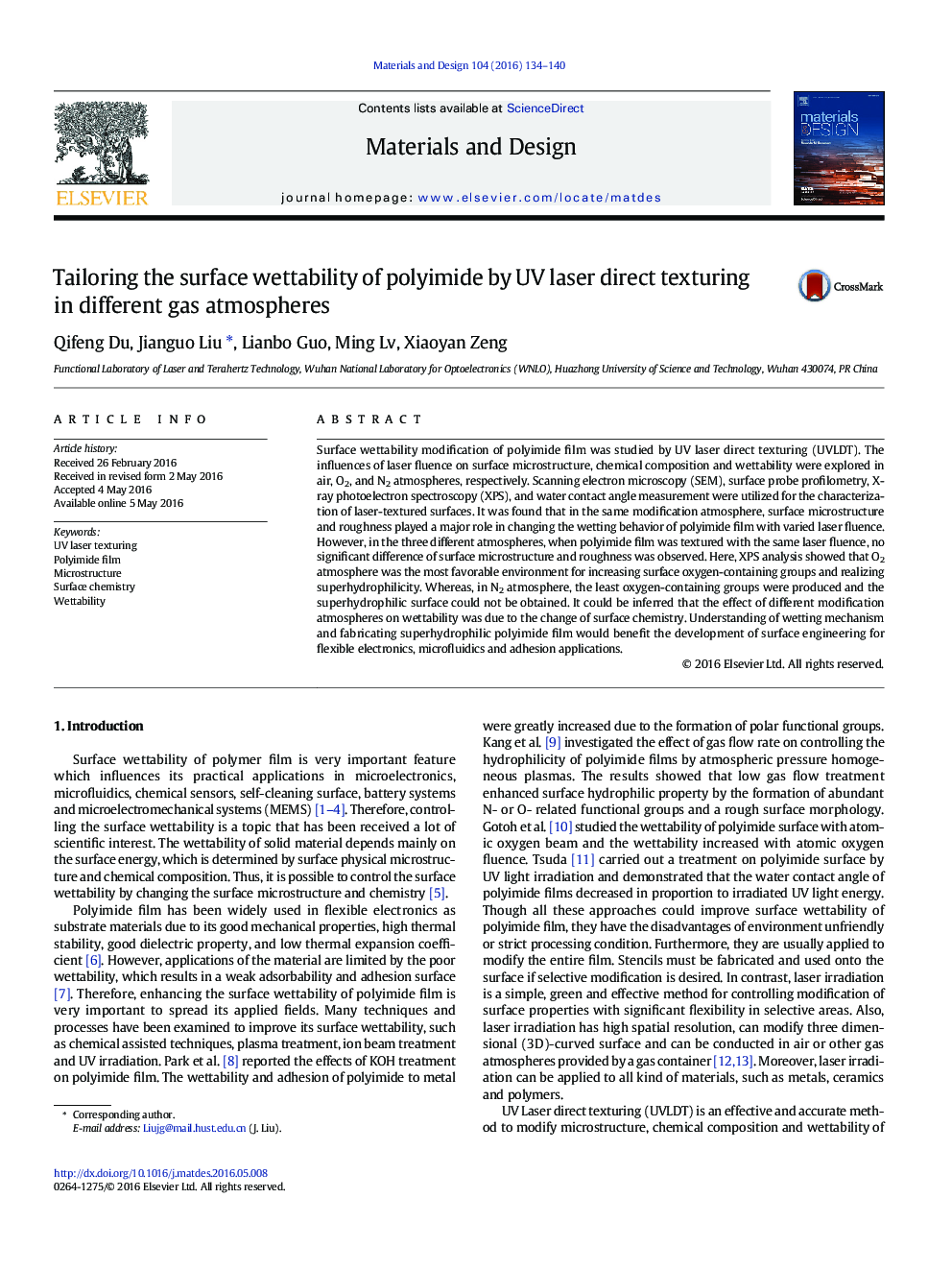| Article ID | Journal | Published Year | Pages | File Type |
|---|---|---|---|---|
| 827928 | Materials & Design | 2016 | 7 Pages |
•The wettability of polyimide was tuned from hydrophilic to hydrophobic and superhydrophilic by UV laser direct texturing.•Superhydrophilic polyimide surface could be achieved more easily in air or oxygen modification atmosphere.•The roughness of textured surface also played a major role in the wetting behavior.
Surface wettability modification of polyimide film was studied by UV laser direct texturing (UVLDT). The influences of laser fluence on surface microstructure, chemical composition and wettability were explored in air, O2, and N2 atmospheres, respectively. Scanning electron microscopy (SEM), surface probe profilometry, X-ray photoelectron spectroscopy (XPS), and water contact angle measurement were utilized for the characterization of laser-textured surfaces. It was found that in the same modification atmosphere, surface microstructure and roughness played a major role in changing the wetting behavior of polyimide film with varied laser fluence. However, in the three different atmospheres, when polyimide film was textured with the same laser fluence, no significant difference of surface microstructure and roughness was observed. Here, XPS analysis showed that O2 atmosphere was the most favorable environment for increasing surface oxygen-containing groups and realizing superhydrophilicity. Whereas, in N2 atmosphere, the least oxygen-containing groups were produced and the superhydrophilic surface could not be obtained. It could be inferred that the effect of different modification atmospheres on wettability was due to the change of surface chemistry. Understanding of wetting mechanism and fabricating superhydrophilic polyimide film would benefit the development of surface engineering for flexible electronics, microfluidics and adhesion applications.
Graphical abstractFigure optionsDownload full-size imageDownload as PowerPoint slide
